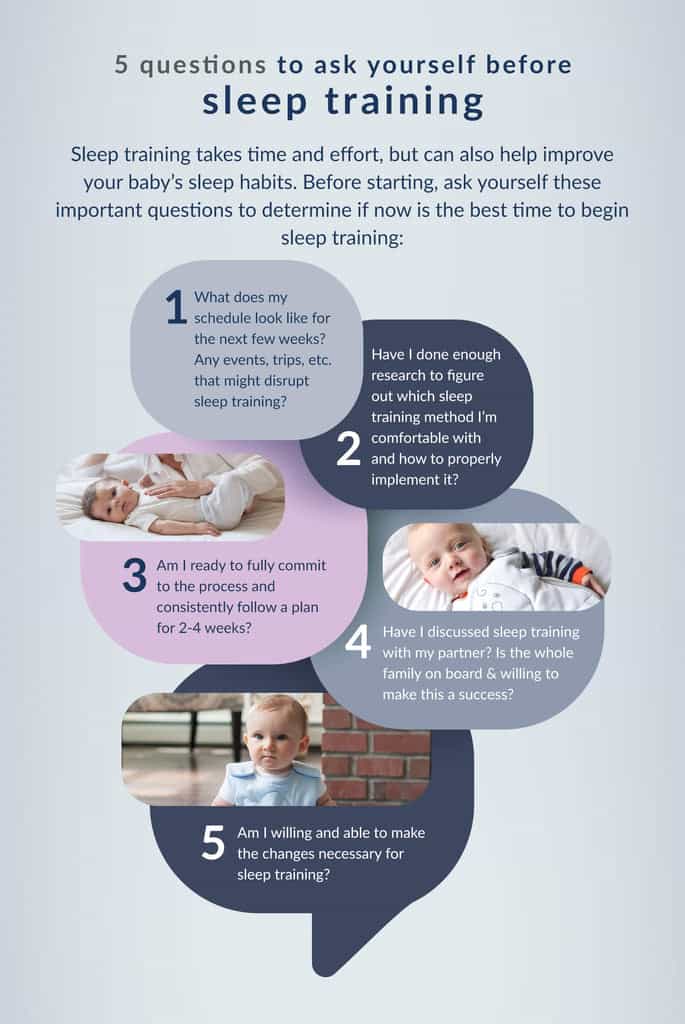Ultimate Guide to Sleep Training for Newborns: Gentle Techniques for Sweet Dreams
Welcome to the warm and cozy world of sleep-filled nights! If you’re a parent seeking guidance on how to help your newborn find their own path to dreamland, you’ve docked at the right harbor. We know those first weeks with a new baby are sprinkled with a unique blend of joy and sleeplessness, so we’re here to smooth the seas and provide you with effective sleep training strategies designed to give your entire family the rest you deserve.
Before we delve into the gentle techniques of sleep training your newborn, let’s remember each baby is a unique little star in the galaxy. What works like a lullaby for one might not be the right tune for another; that’s the beauty of parenting – finding the harmony in your individual journey. So, let’s start this guide filled with patience, understanding, and a sprinkle of sleep magic!
Understanding Newborn Sleep Patterns
To start, gaining insight into newborn sleep patterns is like unlocking the first level of a precious treasure chest. Newborns typically sleep a lot—between 14 to 17 hours a day—but in short spurts that can last from 30 minutes to 4 hours. This is because they have tiny tummies and need frequent feedings, both night and day.
To encourage a healthy sleep foundation, it’s crucial to differentiate between daytime naps and nighttime rest. Ensuring daytime environments are bright and engaging, while nighttime is dark and quiet, sets the cue for your little one’s internal clock, or circadian rhythm.
Preparing for Sleep Training: Comfort, Safety, and Routine
Before we venture through the valleys of sleep training, ensuring your baby’s sleep environment is safe and comfortable is our priority. According to the American Academy of Pediatrics, babies should sleep on their backs, on a firm sleep surface, free from toys, pillows, and loose bedding to reduce the risk of SIDS (Sudden Infant Death Syndrome). Comfort for your baby also includes considering room temperature and dressing them appropriately for sleep.
Furthermore, establishing a bedtime routine can feel like a warm hug for your baby’s sleep habits. Consistency is key; even at a young age, infants benefit from a predictable schedule. This might involve a sequence like bathing, cuddling, a gentle lullaby, and kisses goodnight. Such rituals help signal to your newborn that it’s time to wind down and prepare for sleep.
Gentle Sleep Training Techniques
Now, the heart of our guide: sleep training methods that are as tender as a mother’s touch. There’s often a misconception that sleep training involves letting your baby “cry it out,” but there are several softer approaches to consider:
- Pick Up/Put Down Method: This involves putting your baby in their crib when they’re drowsy but awake. If they start to fuss, you pick them up and comfort them until they’re calm and ready to try sleeping again.
- Fading: Fading is all about gradually reducing your presence in your baby’s sleep process. Initially, you might stay close by, and then over time, you slowly decrease your interaction until your baby can fall asleep independently.
- Paternity Rocking or Nursing to Sleep: Sometimes, simply holding, nursing, or gently rocking your baby to the edge of sleep before placing them in their crib can be a soft transition into sleep training.
It’s important to note that during the first few months, some newborns may not be ready for structured sleep training. Instead, focusing on setting the stage with comforting routines can lead to more formal training when the time is right. Remember, responding to your baby’s needs is not spoiling them—it’s building the trust and security they need to sleep well.
Ride the wave of these early days with empathy and patience, dear parents. With gentle persistence and the wisdom from this guide, you’re well on your way to nurturing a healthy sleep pattern that will benefit your little one’s growth and development. So embrace the moonlight’s glow, the stars’ twinkle, and the peaceful silence that comes from a baby sleeping soundly—we’re here to help every step of the way!
Stay tuned as we continue to unfold more layers of sleep training secrets and peek into how we can adapt these methods as your newborn grows. Because, as they flourish, their sleep needs will evolve, and so will our strategies. Happy sleep training!

5 Essential Tips for Parents Preparing for Sleep Training
Embarking on the sleep training voyage requires preparation, just like setting sail across the open ocean. Here are five essential tips to help you chart your course:
1. Create a Soothing Sleep Environment
Make sure your baby’s sleep area is tranquil and conducive to sleep. Use a white noise machine to drown out disruptive sounds, and consider room-darkening curtains to signal that it’s time for night sleep, even if it’s still light outside. A consistent sleep environment helps reinforce their sleep schedule.
2. Watch for Sleepiness Cues
Newborns can’t tell time, but they do give signals when they’re tired. Watch for cues like rubbing their eyes, yawning, or becoming less active. Catching these signs and starting the bedtime routine before your baby is overtired makes it easier for them to fall asleep peacefully.
3. Practice Patience and Flexibility
Patience is not just a virtue; it’s a necessity when sleep training. Every baby adjusts at their own pace, and there will be nights when things don’t go as planned. Always be prepared to flex your methods to suit the situation and your baby’s needs.
4. Remember, Consistency is Key
Once you start sleep training, try to stick to your chosen method and routine as uniformly as possible. Consistency helps your baby understand what’s expected of them, allowing the formation of healthy sleep patterns.
5. Keep Daytime Feedings Active and Nighttime Feedings Calm
Feedings play a significant role in how your baby sleeps. During the day, keep feedings interactive—talk and play with your baby to encourage staying awake. After dark, maintain a calm atmosphere so they begin to associate night with sleep and quiet.
With these tips and the gentle techniques outlined earlier, you’re all set to help your newborn— and the whole family—enjoy better sleep. Trust your instincts, hold onto your heartstrings, and let this guide be your compass to serene nights filled with sweet dreams!
Remember, sleep training is not just about the destination; it’s about the journey. Each small step is progress, and every quiet night is a milestone to celebrate. As you navigate through the restful waters of sleep training, you’re building lifelong sleeping skills for your little one. So, here’s to smooth sailing, and may your nights be as peaceful as a baby’s gentle snooze!
Sleep is an ever-changing landscape as your baby grows and develops. Keep looking out for our continued guidance on sleep training and how to refine your approach as your child hits different milestones. With the ever-evolving patterns of sleep, your adaptability and newfound knowledge will be your best allies. Happy sleep training, and sweet dreams to your precious bundle of joy!
See more great Things to Do with Kids in New Zealand here. For more information see here
Disclaimer
The articles available via our website provide general information only and we strongly urge readers to exercise caution and conduct their own thorough research and fact-checking. The information presented should not be taken as absolute truth, and, to the maximum extent permitted by law, we will not be held liable for any inaccuracies or errors in the content. It is essential for individuals to independently verify and validate the information before making any decisions or taking any actions based on the articles.




